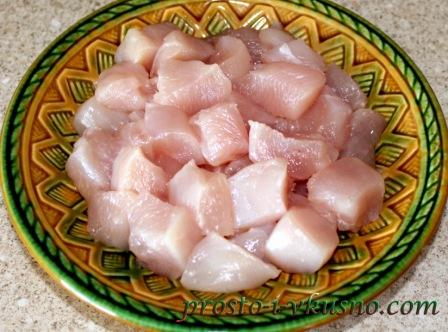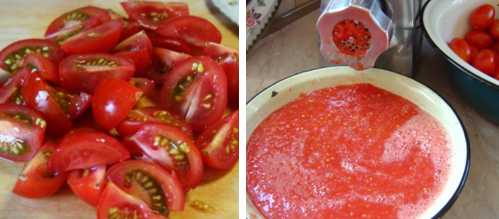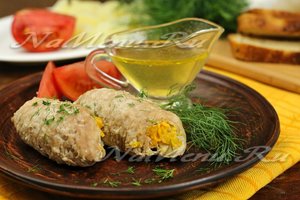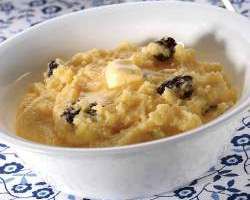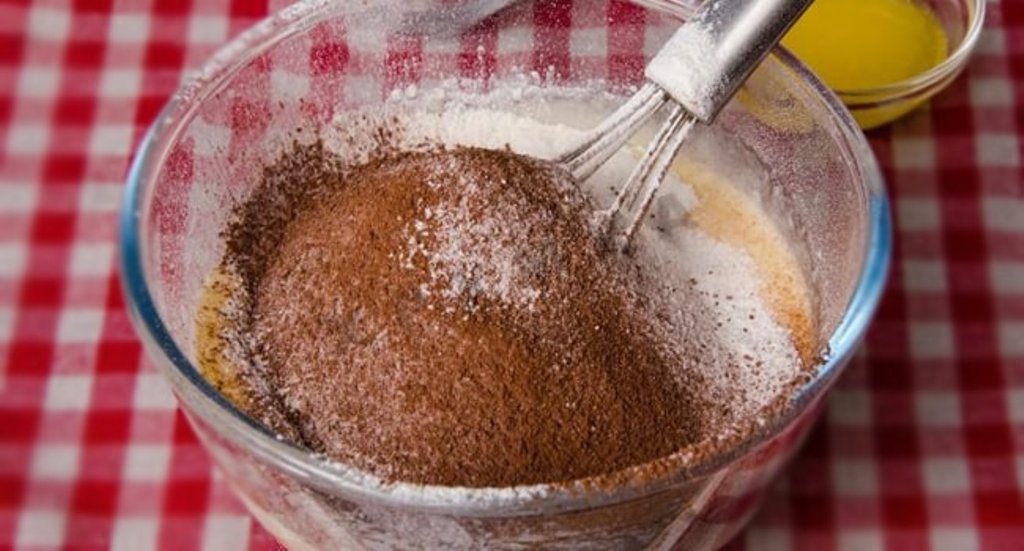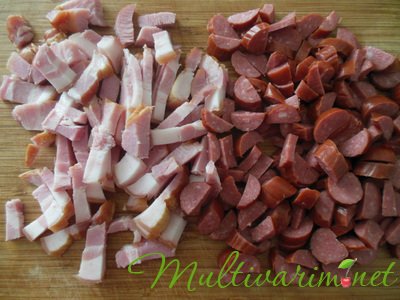The history of the Ossetian pie. What is the name of the Ossetian meat pie
National pies with various fillings are the pride of the hospitable and friendly Ossetia. Traditional cooking methods have been known for over a thousand years. Such dishes are certainly prepared for the festive table: for a wedding, birthday, housewarming. They are also often quite often baked just like that, as a hearty and tasty lunch or dinner.
According to tradition, an odd number of pies are always placed on the table. The only exception is the memorial meal. Baking for social events has a round shape, and for religious holidays - triangular.
The name of the pies in most cases is determined by the composition of the filling. For example, “Khabizdzhyn”, “Ualibah”, “Chiri” are pastries with cheese. If potato is included in the stuffing, then such a dish will be called “Kartofdzhyn”. The dish with beetroot leaves and cheese is Tsakharajyn. And Fydzhyn is a pie with beef.
It should be noted that in some areas of Ossetia the composition of the filling and the above names may vary.
The process of making pies is quite simple, without complicated techniques. However, some experience with the yeast test is still required. As a rule, only women are engaged in cooking; for the stronger sex, work in the kitchen is considered humiliating. An indicator of good baking quality is the thinnest layer of dough and generous filling.
Do I need to modernize Ossetian cuisine?
It is believed that expanding the range of fillings will increase the number of fans of pies. However, you should take into account the risk of loss of uniqueness and originality of foods.
In the preparation of traditional pies, those ingredients that are found in the Caucasus are used - meat, beans, cabbage, beetroot leaves, cheese, etc. Of course, in the pursuit of profit, you can bake flat cakes with almost any filling, for example, with fish. But can such dishes be called Ossetian?
Origin history
Ossetian pie is a flat baked tortilla with a filling. They appeared long before our era. In ancient mythology, Ossetian pies are mentioned in many stories. For example, “Ossetian epic and mythology” or “Nart Tales”. Ossetians believe that pizza is just an unsuccessful Italian plagiarism for Ossetian cake, and the famous Russian yeast chicken coops and fishmen - that this is an attempt to surpass Ossetians.
In Soviet times, Vladikavkaz began to produce Ossetian pies of its own production. The recipe was kept strictly secret from competitors and consumers. In Moscow, pies were very popular, they were ordered in batches and delivered by plane.
At one time, there were problems with the quality of the pies due to the long delivery, but this problem was solved with the help of fat milk. Pies on whole homemade milk turned out to be much tastier, stored longer and smelled incredibly delicious.
Today, Ossetian pies in the coastal region can be ordered even with home delivery, while the choice of filling is so great that it will satisfy the tastes of even the most sophisticated gourmets.
Traditions and cooking rules
In Ossetia, it was believed that if a girl knows how to cook pies correctly, then she will surely marry successfully, and if not, then, accordingly, she had to study and wait. Successful pies were considered those who had thin soft dough.
In the Caucasus, it is customary to serve at least three pies on a plate on a holiday - in honor of the Father, the Son, and the Holy Spirit. Ossetians believed that their pies associate Water, Earth, the Sun. Two pies are placed on the mourning table, because the sun no longer shines for the deceased.
Before you cut the pie, you must read the prayer. Then the oldest man at the table cuts it into eight parts and distributes it to everyone.
There are church holidays, according to which it is customary to cook triangular pies and only with cheese. It is believed that when cooking a pie a woman puts soul and good into it. You can not start kneading the test with bad thoughts and mood. Inexplicably, the fact is already proved that cakes baked in a good mood positively affect the inner world of a person.
Varieties of Ossetian pies
1. Davonjin - got its name due to the content of cherry in the pie.
2. Cabuskadzhin - cabbage pie and cheese.
3. Kartofjin - a pie with the main ingredient of potatoes.
4. Nasjin - a pie with pumpkin.
5. Khabizdzhin - a triangular pie with Ossetian cheese.
6. Artadzikhon - a round cheese pie.
7. Fydzhin - with small pieces of meat.
8. Kudurzhin - bean pie
9. Tsakharajin - with beet tops and feta cheese.
10. Kadinjin - a pie with onions and cheese.
11. Zokojin - with mushrooms
12. Balgin is a sweet cake with cherries or cherries.
Cooking features
In order to make pies thin, soft and tasty, you need to responsibly approach the choice of products. Yeast should be fresh, then the cake will turn out lush and rise well. Fatty homemade milk should be taken as the basis of the dough - it will give the dough a pleasant aroma and milky taste. Eggs must be fresh, and therefore it is better to buy them from farmers in the market. Sift the flour two or three times to remove excess impurities and saturate with oxygen.
Views: 3831/1169
Each of us at least once in his life ate an Ossetian cake. But what do we know about him, except that he is distinguished by excellent taste? Meanwhile, the history of the Ossetian pie is full of interesting facts.
Ancient Alans food
Ossetian pie - at first glance, the dish is simple, understandable and uncomplicated, but it is not. This is a very ancient dish, originating in the cuisine of ancient nomads, the ancestors of modern Ossetians - Scythians, Sarmatians and Alans, with whom many symbols and rites are associated. These round pies are mentioned in the ancient Nart epic.
The diet of nomads was always scarce and limited - cereals, herbs, meat. Cereals, cheese, and dairy products were especially valued. Nomads weren’t aware of the yeast, so an ancient pie is always a cake made from fresh yeast-free dough, made from wheat flour, which uses rennet cheese with a small amount of herbs - wild onion, wild garlic, beet tops or meat as the filling.
Pie was a special dish also because it had to be baked in the oven, it was necessary to stop and cook food. With a nomadic lifestyle, this was fraught with great difficulties. Therefore, pies were associated with special occasions in the life of the tribe and were baked infrequently. Thus, a special feast ritual gradually developed, which became, with the adoption of Christianity by the Alans, also a song of God, a feast liturgy.
Early and late pie
Two types of cake dough are known. Early - yeast-free, such a dough was used by the ancient nomads. Over time, the nomads became aware of the yeast and the dough recipe changed - a “late”, modern version of the recipe appeared, which is used in baking now.
The early cake is yeast-free. Late - baked using yeast.
Ossetian pie is always a symbol. It has two shapes: a circle and a triangle. The circle is a symbol of the earth, infinity and higher powers, the triangle is the fertility of the earth, its strength and stability. Three pies are always served at the festive feast. - three jokes on a platter, laid one on top of the other - this is how magical space is organized, reflecting the three most important categories: God (Huitsau) - upper pie, middle - Sun (Khur) and lower - Earth (Zach) )
At the mourning ceremony, the cakes are served in even numbers. - by 2. There is no middle cake, symbolizing the Sun, since it will no longer be above the deceased. Two pies on the memorial table are a symbol of the violation of harmony of the Universe caused by the transition of the deceased to another world.
The pie is always cut in a special way. Two crosses forming 8 triangles. 3 pies, 4 cuts - in total, the number 7 is the symbol of the center of the Universe and its eternal harmony. In order not to disturb it, pies should be treated very carefully and during cutting, do not turn the dish and do not make unnecessary movements.
Three pies
Pies are closely related to the “Three Pies” rite - a table liturgy - a festive feast that takes place on major religious, national and family holidays. Here prayers are read in a certain order, and pies with cheese and meat, as well as beet tops and potatoes, are served. Three cakes, in addition to the three elements - earth, sun and water - personify the Divine Trinity - God the Father, God the Son and God the Holy Spirit, and the feast itself is approaching in importance to the Last Supper.
Names and fillings
Ossetian pies have their own names, depending on the filling. The name consists of a base and a suffix - jyn, which indicates the possession of something and the content of something. Here are some of them:
Davonjin - pie with wild garlic leaves and Ossetian cheese.
Kabuskadzhin - with cabbage and cheese.
Kartofjin - with potatoes and cheese.
Ualibah (he will be discussed below) - cheese pie.
Fijin - with minced meat (with beef).
Kadurjin - with beans.
Tsaharajin - with beet tops and cheese.
The subtleties of craft
Cooking pies is exclusively a female affair. For men, it was considered very humiliating to deal with the test. Therefore, women bake cakes. Two basic rules for them: 1 - silence and 2 - housewives hair should be removed under a scarf.
This is due to the fact that the pie is a ritual food that requires respect. Flour is always wheat. The dough is now yeast. The cake should not be too thick. A thick and magnificent cake gives out the inexperience of the hostess. There should be a lot of fillings, but not too much. There is a rule for fillings - meat fijin is served on holidays, this is a dish for the festive table.
The oldest of all is the Walibah pie with rennet cheese. It is baked exclusively and only for prayers. It is he who participates in all important Ossetian feasts. It is he - the most important Pie, and about him we can say that he is the king of the table. It is customary to treat him with special trepidation.
When buying an Ossetian cake and treating guests to it, remember that the Ossetian cake is the oldest type of cake on earth, the first food of a nomad, whom he thanked the sky, the earth, the sun and the water for being alive, healthy and able to graze his flocks and feed your family.
Few people think about the history of the Ossetian pie: why it looks like that, who invented it, how it changed its appearance over time.
It may seem that it looks simple and flat, nothing special: there is little dough, cheese is constantly put, except in rare cases, in meat versions. By the way, if you carry out, you will not find a better bakery than ours in the Capital - this is confirmed by many reviews and certificates, as well as the years of our successful work.

The history of the origin of the Ossetian pie in terms of logic
In fact, the cooking method, the form has a logical explanation.
The history of Ossetian pies begins from the beginning of the Tatar-Mongol procession - it was in the XII-XIV centuries - Alans, indigenous tribes, driven from their own territories in North Ossetia. The mountainous places where they later settled were not fertile and rich in crops. With food it was quite difficult, I had to look for ways to cook tasty, healthy and not expensive. Then they began to make this amazing masterpiece of baking, the composition originally consisted of vegetables, oats, grain products and others that could be mined in the mountains then. This preparation of such dishes is now available to anyone, it was quite painstaking work, quite a lot of time and effort was spent.

Ossetians lived in the mountains, where wheat was especially appreciated and because of the constant lack of grain, the cakes were made very thin in order to save. Over time, a tradition appeared to make Ossetian pie with the thinnest layer of dough. Thanks to the rich variety of other ingredients, for example, raising cows, sheep and other livestock and poultry gave meat, new variations appeared. In Russia, there was a lot of wheat, which can not be said about the products for the filling, so we can observe a significant difference between Alan and.
The history of Ossetian pies: features of the filling.
In the North Caucasus, fruits did not take root, recipes for Ossetian fruit pies are not as developed as pastries with cheese and beet tops. They were in abundance, the housewives improvised, inventing delicious dishes.
Traditionally, yeast, eggs, kefir were not used because of the nomadic lifestyle. Now they are successfully used for making pies. This is a certain deviation from the ancient traditions of cooking, such a change does not make the cake tasteless, but rather, many people like it even more.

Large families ate pies in large quantities, so it was necessary to have ovens with the ability to cook not only one pie at a time, in addition, quick cooking was required. Therefore, not only large furnaces were built, but also ovens capable of heating to high temperatures. After preparation, to prevent the baking from drying out, the surface was greased with oil.
This is the story of the Ossetian pie. Times have passed, Ossetians descended from the mountains and settled on the plains, while the inhabitants themselves settle around the world. In Ossetia, this dish is the most important; without it, not a single holiday is held. If you live in Moscow, you can tell our story at our bakery, and at a meal to others.

Premium flour, fresh salmon, onions, vegetables, herbs, water, yeast, salt.
900 r. To order
Pie with beef filling, with the addition of garlic, onions, a mixture of peppers.
800 r. To order
Mexico City Pizza
800 r. To order
pizza sauce, slices of toasted fillet, champignons, onions, green peppers, mozzarella, tomatoes, hot pepper
Meat pizza
800 r. To order
pizza sauce, beef, chicken breast, tomatoes, mozzarella- To order

Pizza "Bianca"
750 r. To order
pizza sauce, beef, champignons, green peppers, onions, olives, ham, pepperoni, mozzarella
Chicken pizza
750 r. To order
chicken, green onions, mozzarella cheese, mayonnaise

Premium flour, salmon filling, water, yeast, salt.
950 r. To order